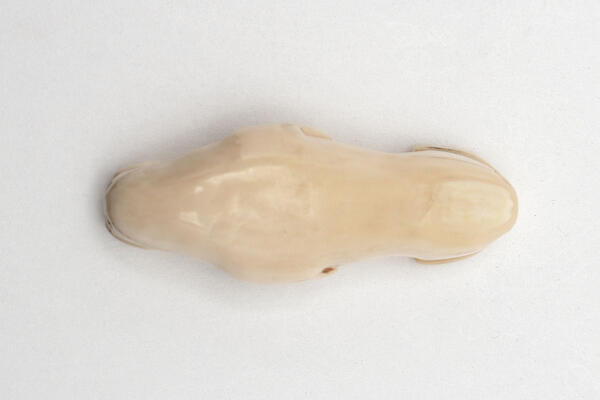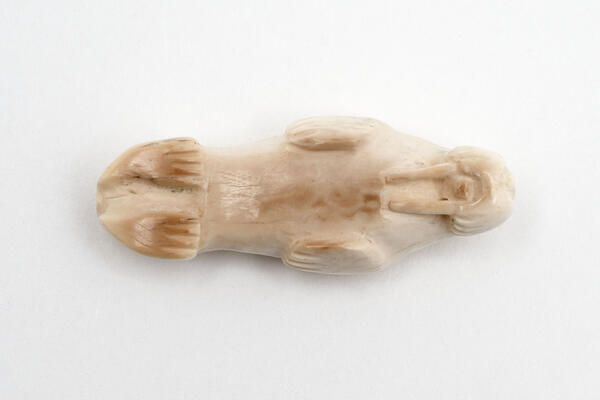The figurine is made of a walrus tusk. Bone carving is one of the oldest crafts of the peoples of the North. For the residents of Chukotka, walrus tusk was one of the most accessible materials, as there are significantly fewer trees on the northern coasts.
Tips of harpoons and arrows for hunting, knife handles, jewelry, household items and ritual figurines were all carved from walrus bone. The early products of craftsmen from the Chukotka region were distinguished by their simplicity and conciseness, however, in the 20th century, their works became increasingly intricate, capturing the dynamics and variety of compositions in animal figurines.
The way the finished product looks largely depends on the material. Animal bones need to be processed in a special way before any work could be done. First, all the fat is removed, then the bones are bleached and cut into pieces of appropriate size. In order not to spoil the material and reveal its special features in a favorable light, the craftsman must know and understand the material well. This is why, for example, an engraved pattern on the yellowish surface of the walrus tusk needs to be emphasized with color.
The Atlantic walrus is a unique species of the Barents Sea region listed in the Red List of Threatened Species. These northern sea giants have a body up to four meters long and weigh up to one ton. The walrus has a thick skin with wrinkles and folds, and young walruses have a fairly thick hair cover. The life expectancy of a walrus in the wild is up to 30 years.
The gestation period of a female walrus lasts for more than a year. The cub is born about a meter in length and weighs as much as a human adult. A walrus can dive to a depth of 80 meters in search of food and remain underwater for up to half an hour. Another thing worthy of note is that walruses take sunbaths, and under the influence of sunlight, their skin turns pink — this is caused by the expansion of blood vessels.
In summer and autumn, walruses gather on coastal rookeries, and in winter and spring they live on ice, where females give birth to offspring. The Atlantic walrus in Russian waters inhabits the north of the Barents Sea, the Novaya Zemlya region, the northern part of the White Sea and the Kara Sea.
The population of walruses living on Franz Josef Land and north of Novaya Zemlya is not as well-researched. Plans to increase cargo traffic along the Northern Sea Route tenfold and the constant increase in the flow of tourists can harm animals. The walrus is one of the most vulnerable representatives of the Russian Arctic fauna.





